This post includes 6 expert tips and best practices for any business, including a non-profit, wanting to run an integrated marketing campaign that generates more potential donors and raises more dollars.
Wait! What is an integrated marketing campaign?
An integrated marketing campaign is a marketing effort that uses a consistent message across traditional and non-traditional marketing channels. Ultimately all the messages should reinforce each other. Integrated marketing campaigns enable brands (yes, your nonprofit is a brand) to reach new audiences and gain mass exposure for their marketing promotions. Plus, in the information overload world in which we live, folks need to see your message multiple times before their brain will process it (Did you know that, on average, only 16% of Facebook fans will see what you share)?
There used to be a marketing ‘Rule of 7’ stating that a prospect needs to hear the advertiser’s message at least 7 times before they’ll take action to buy that product or service. Guess what? That rule was invented by the movie industry in the 1930’s! It takes a lot more impressions today (I’ve heard as many as 21).
So a multi-channel campaign is the way to go. Whether you reach folks 7 or 21 times, or somewhere in between, your messages should range over different sorts of media. Consider emails and newsletters, social media posts, website and blog, direct mail, advertising and even in person presentations. But it can’t be a big mish-mash. You’ve got to integrate everything to ensure all your media channels are working together. That’s how you’ll ultimately get noticed.
To illustrate how this might work for you, here is an example of an integrated campaign that spanned seven geographically separated Rescue Missions. Together, they launched an integrated summer campaign challenge that was dubbed “Give the Gift of Hope.” It included custom branded Facebook posts, a custom targeted Facebook pay-per-click (PPC) campaign and newsletter/email blasts.
6 Secrets to Rock Your Integrated Fundraising and Marketing Campaign
1. Be Consistent
Did you know that custom-branded “donate” pages nested inside a nonprofit’s website raise 6X more money? This means creating a donate page that uses the same language, colors, fonts and images as your campaign, rather than simply sending folks to one generic page. Consistency also means every piece of creative you design for your campaign must be consistent across all channels, both online and offline. As mentioned, the Rescue Missions Summer Challenge included seven different local and regional nonprofits, each with their own logo, unique brand and preferred fonts. A challenge for sure, but not impossible if approached strategically! In this case, care was taken to both reinforce the campaign theme and fit each individual branch’s brand requirements. The Rescue Missions maintained the design colors and theme throughout their other marketing materials, like their ads and social media images.
2. Add a hashtag
When you’re working with multiple campaigns, multiple platforms and multiple businesses, a hashtag can be the one thing that pulls it all together! Rescue Missions chose two hashtags to include with their Summer Challenge, #GiveHope and #SummerChallenge. This allowed them to track everyone who was talking about and sharing their campaign online.
3. Use the same form to collect entry information
Even though each Rescue Mission had their campaign published to a variety of Facebook pages and websites, they had one consistent goal: to raise $10,000 during the month of May. They hired outsourced online design experts build a single form to collect entrants’ information across all their channels. This kept their entries organized and made it easy for them to track participation across multiple channels and businesses.
4. Have a strong call-to-action
If you’re running an integrated marketing campaign, it’s important that your campaign design emphasize the actions that will help you achieve your goals. In the Rescue Missions’ campaigns, the goal was to raise $10,000.Each campaign email and Facebook post included a large, red “Donate Now” button and a meter that let fans know details about fundraising goals. If your goal is to build your mailing list by getting people to enter your promotion, for example, put emphasis on your “Submit” button. If you’re offering a valuable download, put the emphasis on your “Download Here” button.
5. Have an advertising plan
Integrated marketing campaigns are meant to gain mass exposure and the way to help achieve that is to create an ad campaign that will run alongside your promotion. This will allow you to reach a larger audience and drive traffic back to the variety of places your campaign is published. There are a variety of advertising options on social media, learn more about some of the best ways to invest your online marketing budget from this article.
6. Add multiple promotion channels
The more places you can run your campaign, the better. If you know where your target markets hang out, prioritize those channels. The Rescue Missions favored Facebook, so their integrated marketing campaign could be found on all seven of the Rescue Mission Facebook Pages, all seven websites and as custom-branded landing pages. That’s 21 different places they were able to collect data and drive traffic from! On top of that they used Facebook posts, newsletter/email blasts and a Facebook PPC campaign to promote their fundraiser.
Examples of an Integrated Marketing Campaign
Below you can see the seven different versions of the Rescue Missions’ key integrated campaign call to action. You’ll notice they do a number of things very effectively:
- They incorporate imagery/branding from each individual Rescue Mission at the top.
- They include the “Give the Gift of Hope” campaign tagline at the top.
- They use the “Join our Summer Challenge Today” campaign call to action consistently.
- They tell compelling stories to capture folks attention.
- They make it easy for folks to read the full story by including clickable links that take them back to the organization’s website.
- They make use of a specific challenge grant to create a strong impetus to leverage donor giving.
- They include a clear deadline to create urgency.
- They use a thermometer to create a sense of campaign momentum and emphasize how the donor’s gift will make an impact.
- They include a large, clickable “Donate” button in a bright contrasting color.
- They provide opportunities for additional engagement via “like our page” buttons and a fill-in form to join their email/newsletter list.
- They include basic contact information at the bottom, should folks want to be in personal contact with the organization.
Lastly, your key to success is simply this: (1) multiple channels; (2) consistent branding, and (3) simple, user-friendly content. Take a quick look at the examples below. Now go on and rock your multi-channel social media, and online/offline fundraising strategy!
If you have any other secrets to share, please do so in the ‘comments’ section below.
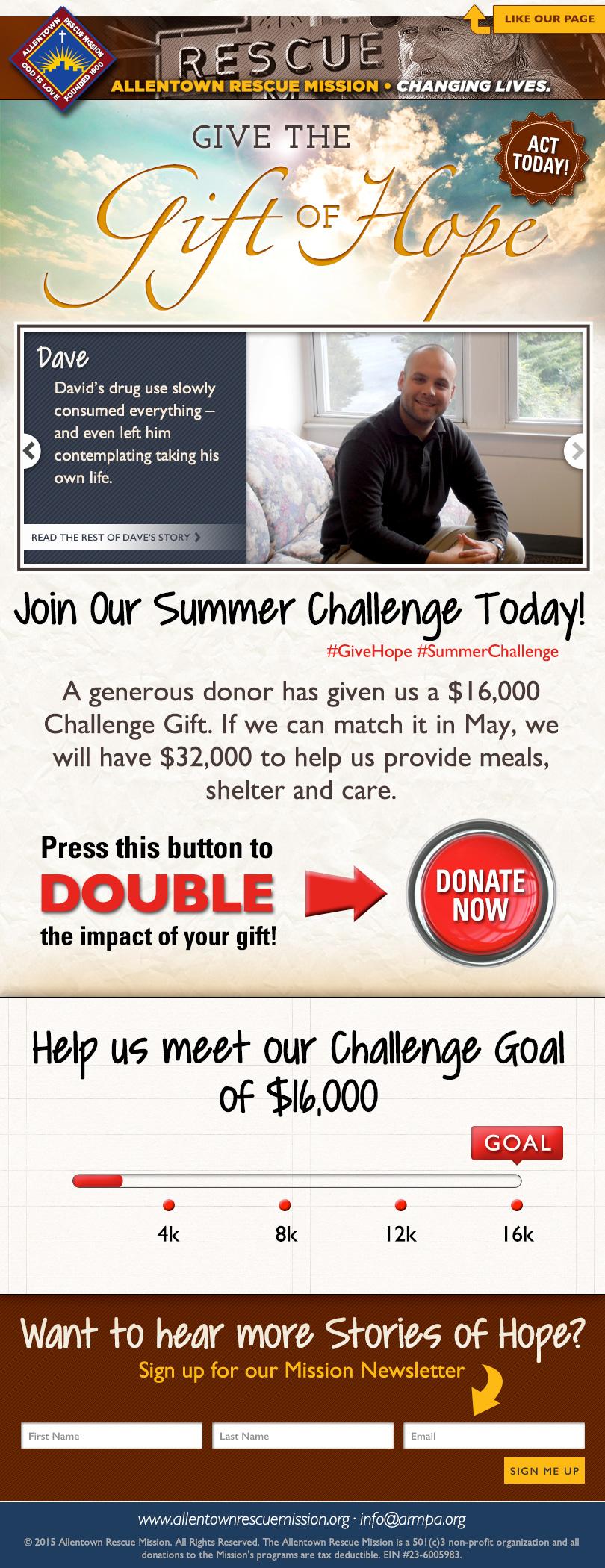
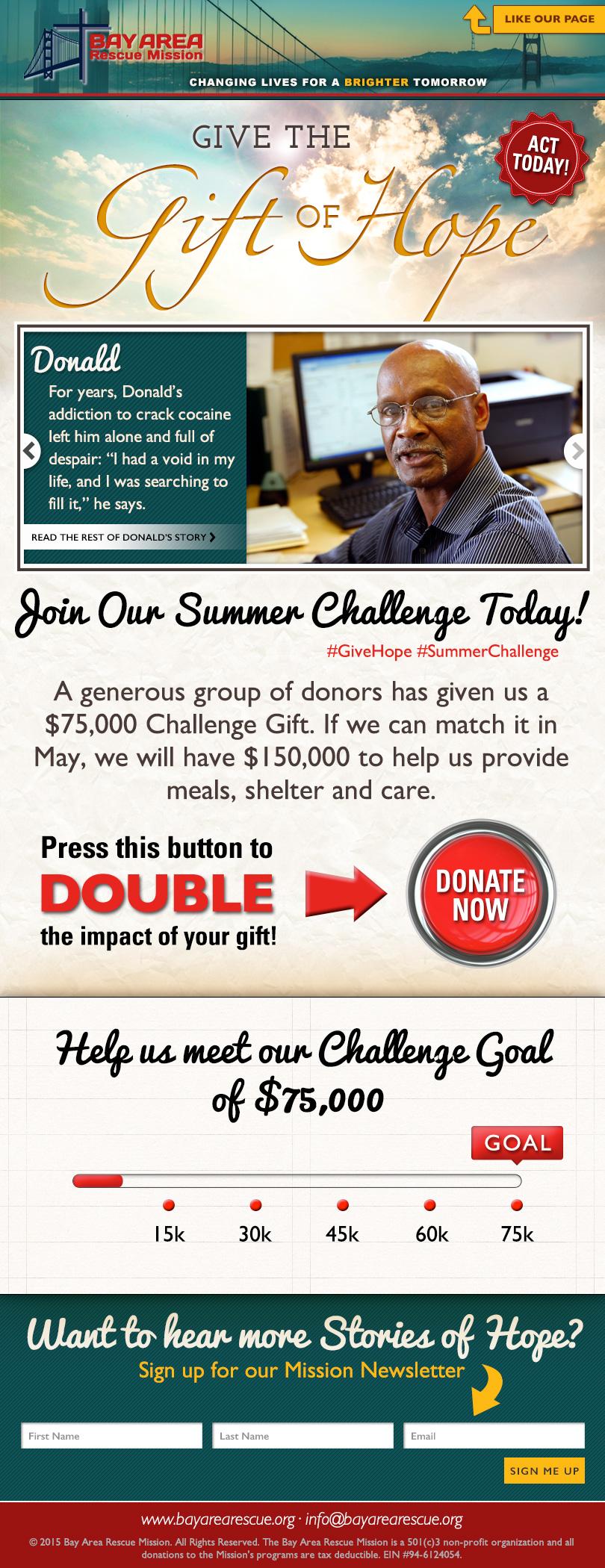
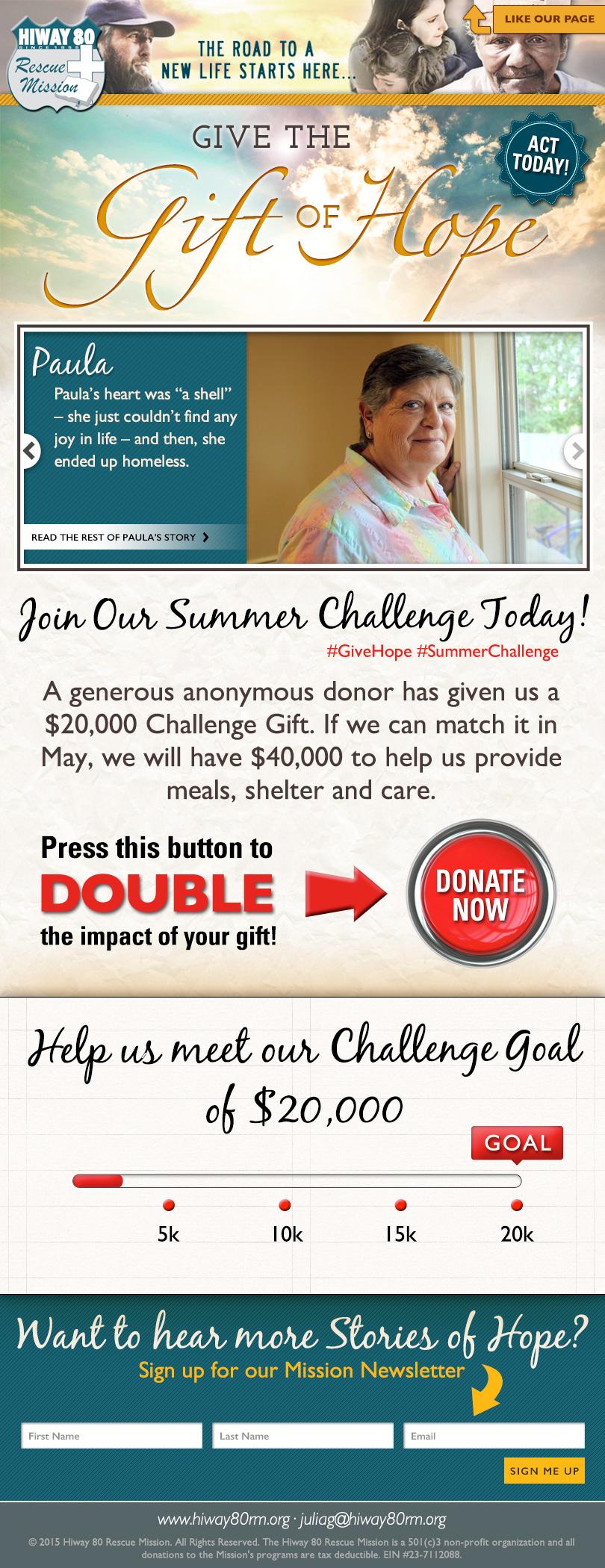
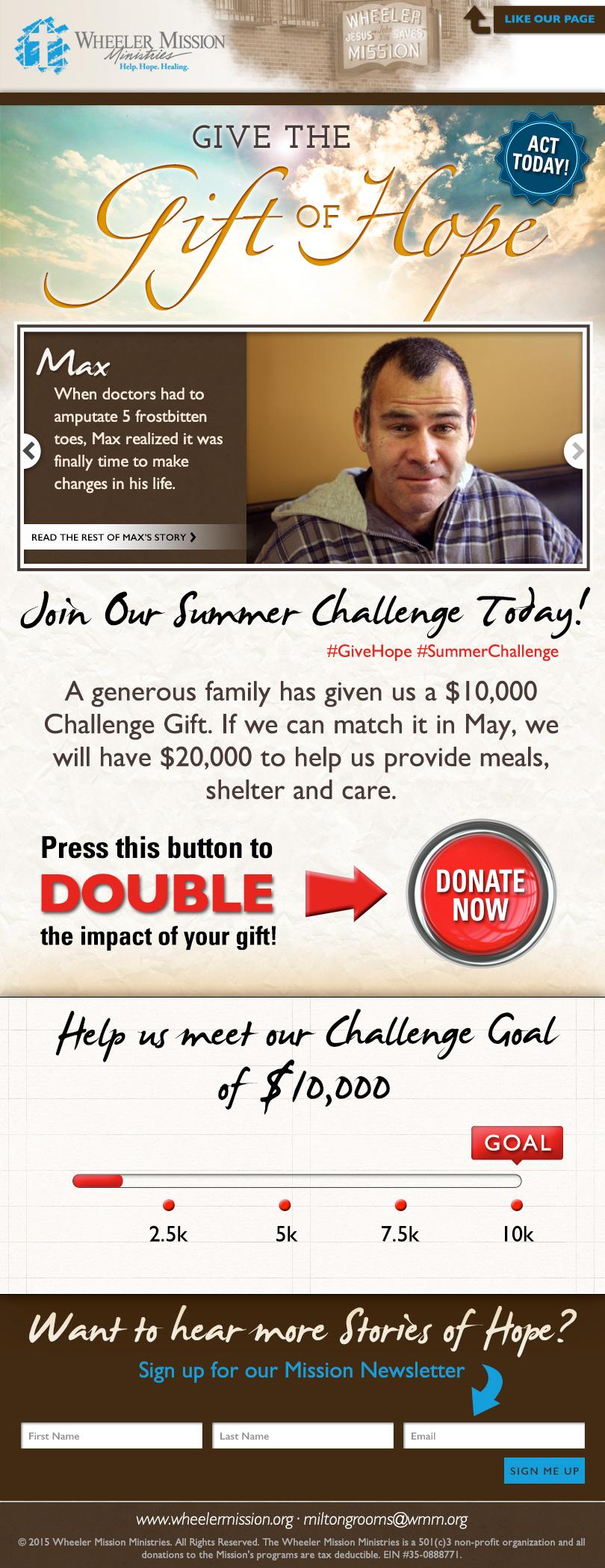
Want More Social Media Tips and Resources?
Get my ‘Hop on Board’ Nonprofit Social Media Guide — 27 pages filled with more than 100 tips, resources and tools to help you with your resolve to fully embrace social media for your nonprofit. It also includes lots of fun ideas and links to creative strategies other nonprofits are using. Check it out! It’s cheap, and comes with my no-questions-asked money back guarantee. Why the heck not?
This post includes campaign examples/images from How to Create a Multichannel Integrated Fundraising Campaign courtesy of Socially Stacked.

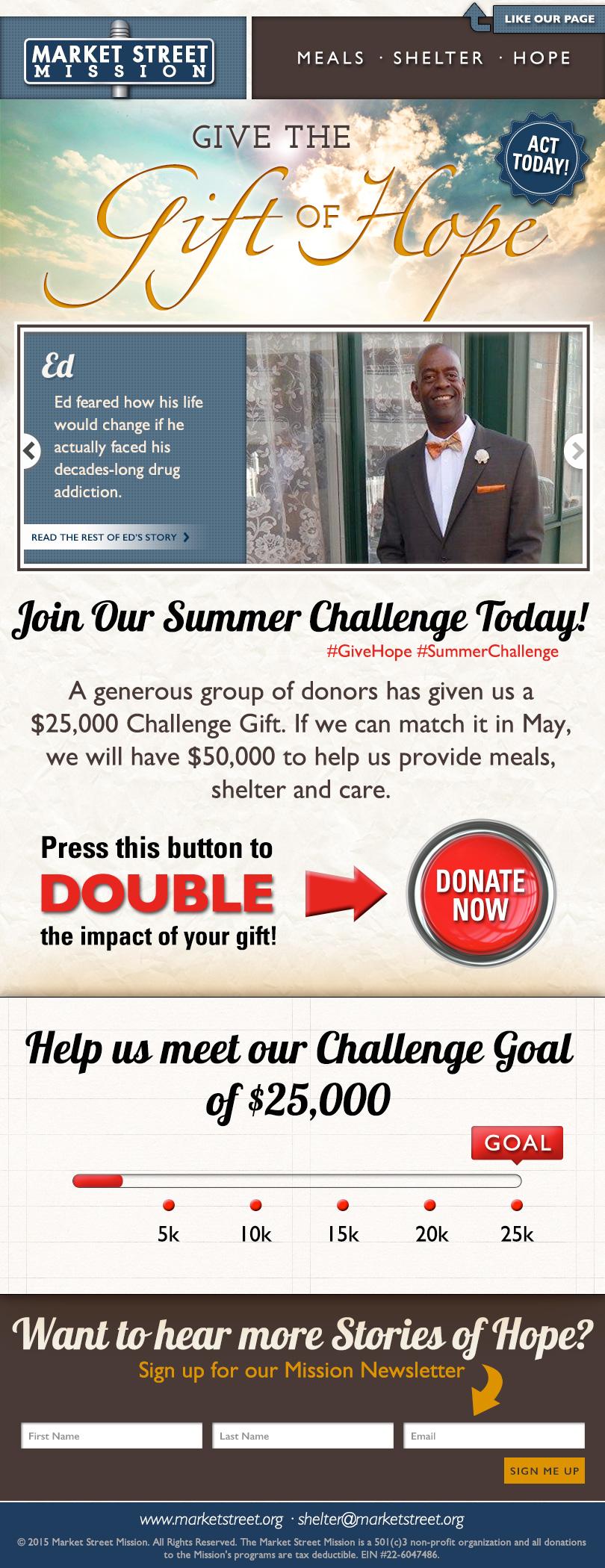






Hey Claire – thanks so much for this article, I found it very helpful!